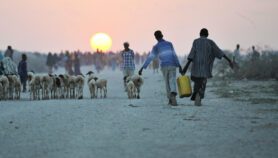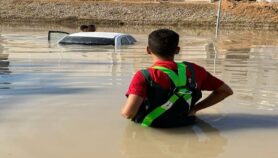Send to a friend
The details you provide on this page will not be used to send unsolicited email, and will not be sold to a 3rd party. See privacy policy.
Natural disasters are likely to wreak more havoc in the future, due to overcrowding and poor emergency planning in vulnerable regions, yet relatively simple measures could save lives.
In this article in Nature, Quinrin Schiermeier outlines the risks posed by earthquakes, tsunamis, volcanoes and floods, and ways in which their impact can be reduced.
The pressures of population and development have put more people in harm’s way, particularly in the coastal zones of
Already, experts warn that if an earthquake hits
Simple ways to save lives include teaching people how to notice warning signs from nature – such as shaking ground or a receding sea – planning escape routes, evacuations and better ways of using land in coastal regions.
Schiermeier also highlights the difficulty of translating the latest scientific knowledge into policy and disaster preparedness.
To address this,













